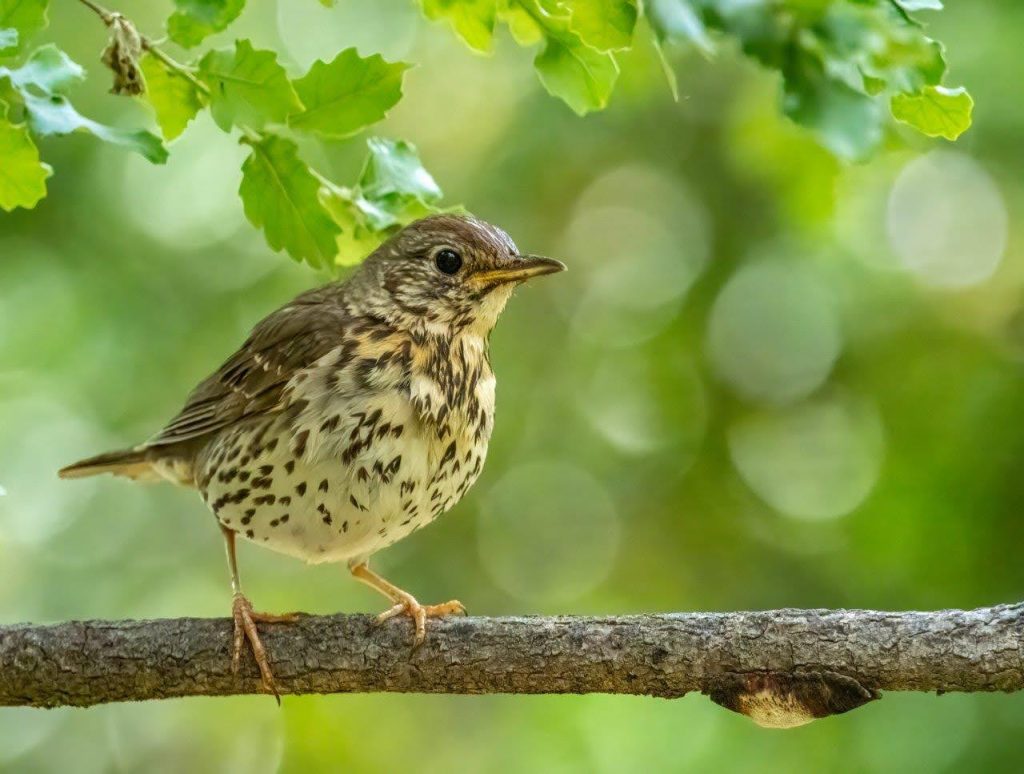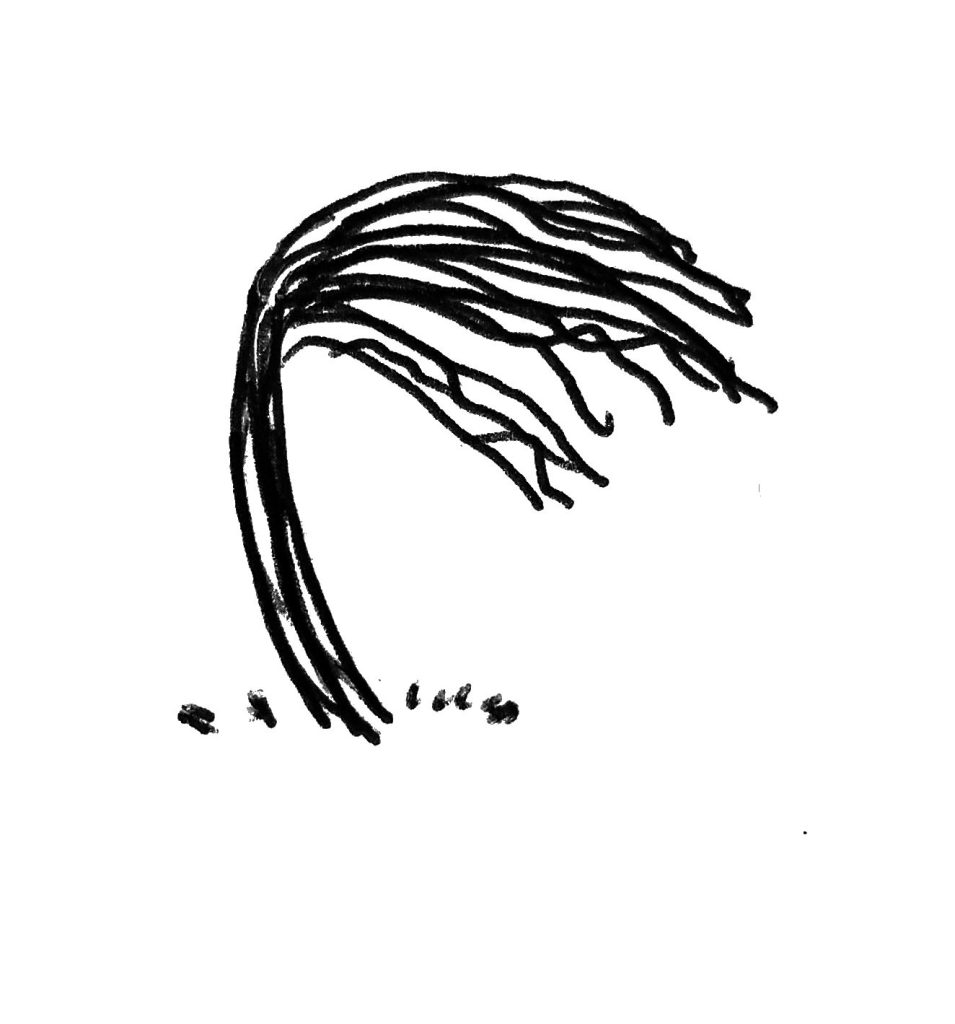
Linda Goulden chats to Charlotte and shares two poems.
Spring, almost
in the way light lands
on a tree
and the tree stands tall
as it has
all along,
burdened, cold,
dreadfully still,
spellbound by stars
in their long white fall
as dust in ice in air.
A fog parts
and a path runs on,
turning only to call
I’m here.
Linda Goulden, first published in Obsessed with Pipework, 2022.
Charlotte Gann: I love the delicacy and weight of this poem, Linda. It has a really iconic quality, for me, that figure of the tree. I like how the title runs into the poem. Every word feels freighted. And the picture painted in my mind has a transcendent quality.
Something lifts and transforms in those lines ‘dreadfully still, / spellbound by stars’. I adore what happens in me when I read that string of monosyllabic words ‘in their long white fall / as dust in ice in air.’ Your poetry always has a wonderful sonic spell to it – I know you have sung some of your poems too – and that’s at least half their magic, for me. This poem seems so simple, and yet carries enormous, generous weight and wisdom. Art that transforms. I see a figure here, elusive but true, passing into some new state before my eyes, and within me.
(I think faintly back to one poem I have, in my collection The Girl Who Cried. In this, I’m caught by the sight of a hawthorn tree, ‘standing alone, / all fingers and space, // holding its frozen pose, / facing one way, / the way the wind has made it. // And I see me. Bleak, brittle, / almost ridiculous, / and mauve with loneliness.’)

Your tree seems magical though. How do you do it? What is writing poetry about, for you?
Linda Goulden: I love ‘all fingers and space, // holding its frozen pose […] mauve with loneliness.’ My tree has not forgotten such weather, such times, such feelings.
I’m so glad my poem reached you, Charlotte. It is one I have kept putting away and coming back to, paring it down and revising, over quite a while, because I knew it felt important to me, but I wasn’t sure if it might be too rooted in this place where I live to be meaningful to other people.
How do I do it? Well, this one began with ‘a certain Slant of light‘ which caught my eye. I’m no Emily Dickinson but I kept looking and reacting and remembering. I often like to begin with close observation, thinking only of what’s there, but as I write then what I have felt about other things in life find their way into the words. This is a real tree in a real place yet it contains my own difficulties with winter (dark days, ice, confinement, low mood, only partly relieved by beauty in snowfall). The path which turns is a real canal towpath running past my house but also my relief and hope at the turn of spring. I was surprised by a very clear image in my mind’s eye of a child running off independently but turning back to make sure she is still seen. (For me, only much later did it occur that the child could hold my continued love for my late husband, and for this place where we lived together, my hope of a freer life for myself and something about spring itself.)
What is writing poetry about for me? I’m not sure I know! Sometimes it is a way to explore a problem or to clarify an unclear emotion. Sometimes it is storytelling or portrait painting. Sometimes it is an attempt to crystallise a moment. Sometimes it is the pleasure of playing with language. I recall hearing a Radio 3 programme, Letters to a Young Poet, about ten years ago – five contemporary poets were asked to write their own essay in the form of a letter to a young poet, as Rainer Maria Rilke had done. Don Paterson, in his ‘Letter’, made the comment that poetry is still ‘the best game’. So it is, though it can be a thankless, tough, tedious, exasperating game too.
CG: I like the thought of poetry as that ‘game’ (there again, perhaps, is a glimpse of that child on the path, playing?). For me, I think it’s that too. An exploration of ways to couch things in this funny coding we call words. To say things that are huge and small and intricate and simple all at once. And insights that have sprung from and across the chronology of a lifetime.
Maybe you’re more of an Emily Dickinson than you think, Linda! I love that image from her same poem: ‘the Landscape listens’; it seems pertinent.
Here, I like how you connect the path in your poem with the real towpath, the image in your mind of a child, your continued love for your late husband, and hope of a freer life; all this, as well as spring itself (environmental concerns always seem strongly there, too, for me in your poems). And yes, the poem carries all that out to its reader… as well as all the reader brings and adds! This is the enchanting infuriating game of poetry. Without it, how and where and to whom might these things be said (or sung)?
Do you write mainly for yourself, do you think, or to connect with others?
LG: You do ask searching questions! I think I write first for myself, then for the wrestle with the words, but in editing and revising I think more about a potential reader. There is often a personal precursor or backstory which starts things off but revising has to pare much of that away to leave something that can stand on its own for a reader without the back knowledge if I am to hope to submit it for publishing or to read it to an audience.
It is so lovely to see a hearer in an audience responding to a poem or to receive a reader’s comment on a poem, sometimes with a new insight from their understanding that I hadn’t expected was there! Other poems stay unshared if they are just for me. And some poems are written to a theme or commission and so have a clearer potential readership, although they may still be personal to me. ‘Spring, almost’ was written just for me but then later shared through the magazine Obsessed with Pipework. Here’s another poem, ‘Philomel’. This was written specifically for a Beautiful Dragons Collaboration anthology entirely about birds on the endangered species list and which raised money for the RSPB.
Philomel
For the song thrush (Turdus Philomelos) upon learning it had joined the red list of endangered species.
I am not, I am not, I am not,
not yet, not yet,
not yet without a tongue,
not yet without a voice,
not yet without a song,
not yet.
The one you thought, the one
you thought would feed you,
does not need you.
The one who bought the land
and stripped the land of cover,
who pretends to be your lover,
does not heed you.
Listen, sister, listen,
do you hear me, hear my fear?
Are you following my thread?
While a tongue is in your head,
while a word may still be said,
make them hear me,
make them hear.
I am not, I am not, I am not,
not yet, not yet,
not yet without a tongue,
not quite without a song,
not lost without a trace.
Not yet.
Linda Goulden, first published in the anthology Watch the Birdie, ed. Rebecca Bilkau, Beautiful Dragons Collaborations, 2018
CG: This poem is powerful, Linda. The song thrush’s song; and, through her, all endangered species? Also, the strong female voice from the Greek myth. And the poet’s too? I love that play on ‘I am not, I am not, I am not,’ running into all I do still have (but won’t forever/long) – i.e. running into a beautiful resounding ‘I am’. Our voices won’t last forever, or maybe be heard, yet they matter? I especially like those three echoing, cleverly varied lines of: ‘not yet without a tongue, / not quite without a song, / not lost without a trace.’ Like the ‘yet’, ‘quite’, ‘lost’ thread.
I totally get what you mean about paring back poems, in the editing stage, to find the root or essence – ‘something that can stand on its own for the reader’. (In Don Paterson’s Letter you shared, which I really enjoyed listening to – thanks! – he also says ‘Only write half the poem but precisely the half that will prompt the reader to supply the rest…’) I, as reader of this one, both feel the huge pang of sorrow at (all) the loss – the loss of the song thrush – and sense my own fleeting, singing self, as well as vividly yours, in your words… (Is it, by the way, extra special, to hear your own words sung, as I know you have?)
LG: Although I know song birds are usually male, seeing the Latin scientific name Turdus philomelos immediately drew me to the myth of the two sisters who became swallow and song thrush (or swallow and nightingale depending on the version). And, yes, I admit there is also some sense in there of my own voice disappearing unheard, whether for lack of publication or age or mortality!
Neither of the poems we discuss here was written for or set to music but some poems of mine have been (set to music by three different composers). It is quite a thrill. I particularly treasure a memory of arriving late to a choir practice and hearing my own words sung as I climbed the stairs and, at my seventieth birthday party, being given a solo performance of another poem setting as a surprise gift.
CG: I like both those anecdotes, Linda. Especially the staircase one – almost a poem, in itself? There’s something in it: about that idea of one’s own voice disappearing unheard, and yet somehow resonating on, filling a stairwell? Heard by others, and heard by you yourself, as you climbed that stair, not yet seen – as I picture it – by those singing. Both poems we’ve read have that strong sound/sense of ‘I’m here.’ Elusive, fleeting, glimpsed, echoing. A ‘trace’ of…?
LG: If we are loved and lucky in life (and I have been) we begin with song and rhyme and story and performance. I wrote stories in childhood and songs as a teenager. I acted and sang in early adulthood. I have always enjoyed reading and reading aloud. How glad I am that my third age has brought them all together with poetry and introduced me to a stimulating and supportive poetry community – including The Understory! Thank you.
CG: Thank you, Linda. And long may those echoes reverberate…
